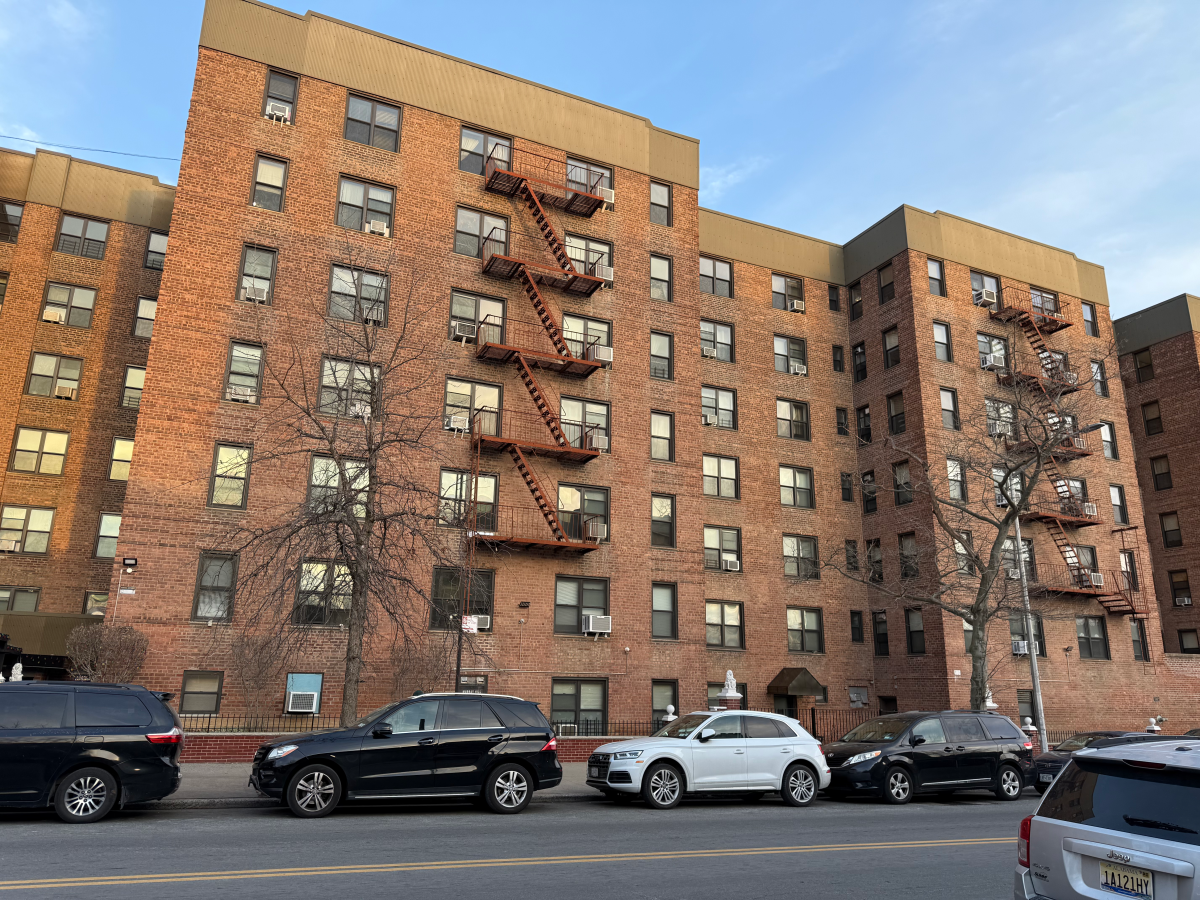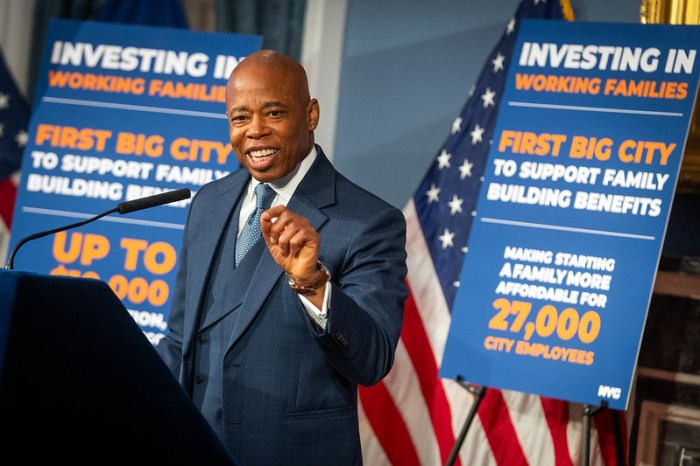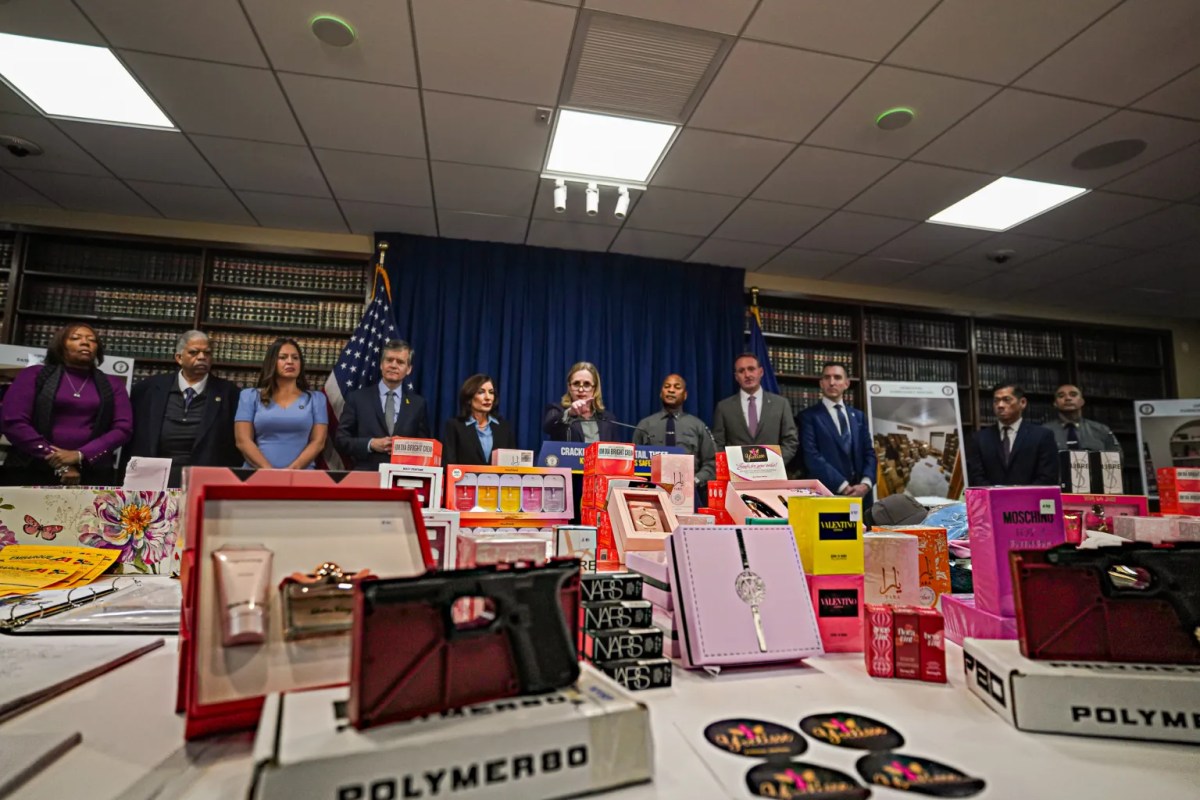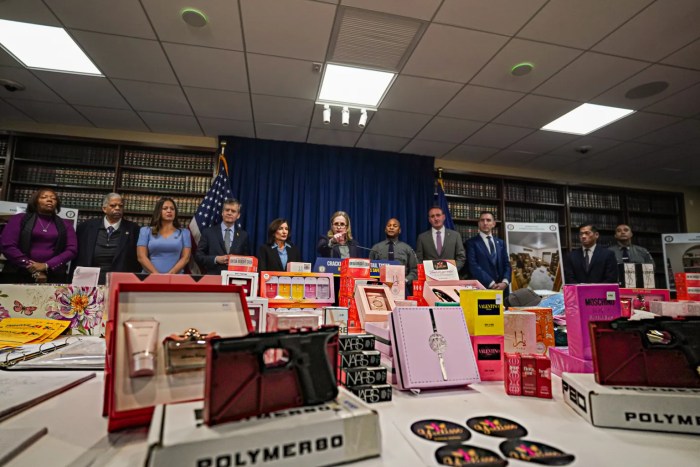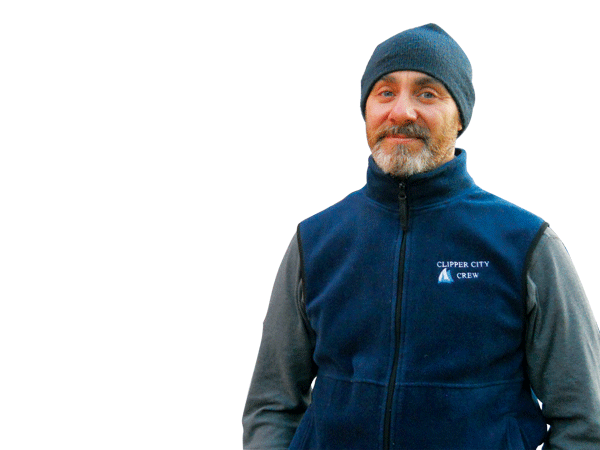
BY KAITLYN MEADE | Tom Berton, 47, president of Manhattan by Sail, has been sailing the waters around New York City for more than two decades. Starting out with legendary skipper Nick van Nes, Berton pursued his passion for sailing by buying the Shearwater yacht just prior to 9/11. But despite setbacks, he has managed to raise a successful business from the hull up and continues to share his love of the water with any New Yorker who tours the harbor with him. Downtown Express met with him at his offices and walked to the South Street Seaport to survey his berth, abandoned for the winter, at Pier 17.
You are a born and raised New Yorker. What was it like growing up in the East Village?
I was born in ’65. My mom was born and raised in Bedford-Stuyvesant, Brooklyn in a Jewish ghetto. Her big move was to Manhattan. She left her life behind and married this big, colorful bohemian. My dad told me a lot of wild stories over the years and I never fully believed him; it’s only now that I’m finding out that many of them are true.
I grew up on 10th St. and Second Ave. in the East Village, opposite Saint Mark’s Church. It was the hippy, beatnik, Poetry Project church. I was raised in and around the jazz scene here. I have a scar from Dizzy Gillespie’s Doberman on my eyebrow. My dad used to play chess with Dizzy.
I spent a good portion of my time in the first co-op in New York. There was a trapeze and a swing. They cut the top off the water tower and made it into a swimming pool on the roof. It was that kind of childhood — jumping roof to roof with no supervision.
Have you seen the city change over the years?
It’s not the Wild West in New York anymore. But I think the city’s a lot safer. Now that I have small children, I don’t think it’s so bad.
A lot of Manhattan has lost some of its diversity. There’s a rawness you can still find in some places, like enclaves in Nolita. The Lower East Side still has some of that flavor, and is still harking to that intense atmosphere.
The tradeoff is that the water is so clean. The fish don’t float upside-down anymore. It used to be an oil slick. Even when I started sailing in the ’80s, if you got water on your hands and touched your face, you could get really sick. Now, it’s much cleaner. My crew called me one day to say that they saw dolphins. The attention to the waterfront has been great. In the late ’80s, we were the only sailboat out there. Now you can’t look at the harbor without seeing them.
How did you become a sailor?
Part of that was Nick van Nes, who was this wild, off-the-beaten-trail New Yorker. I remember I was walking along Battery Park, and there was some guy with a pickup truck in the park. It was this salty, bearded man, who turned out to be Nick van Nes. He was shouldering this monstrously large duffle bag. My friend and I went over to help him. We carried this body-sized bag and right before we were about to drop it in the river, he opened it and it turned out to be sails for this beautiful, wooden, historic sailboat — the Petrel.
Long story short, he said, ‘Come back and I’ll take you sailing.’ It was the best thing I’d ever done in New York. It affected me. I quit my job at the Japanese shipping company after I’d only been there three months. I lived on the boat, protecting it at night and sailing during the day. It lasted the rest of the summer, but it wasn’t going to be my career — or so I thought.
I worked as a Japanese interpreter and drove a bus for a Japanese TV company. I bought a retail franchise of MCM, a leather goods brand, in Banff, Canada, marketing mainly to Japanese tourists. Just when I was bought out as a franchise, I bought a ski and snowboard shop. It lasted a year and a half. I did some import/export in Japan. But whenever I was in New York, I came back and volunteered on this boat.
You slip the line, leave the berth, and it’s amazing. You suddenly realize you were on an island surrounded by water. It’s a world away. It’s a sensate, rich, full experience. In New York it’s all about not noticing how noisy it is, how busy you are. Sailing is an ‘ah’ moment where you can take a deep breath.
How did you start Manhattan by Sail?
In 2000, I got word that the Petrel wasn’t coming back. Van Nes was done with New York City and he was taking his boat up to Martha’s Vineyard. So my solution was to sort of lift up one boat, and replace it with another.
I bought a boat, the Shearwater, in February of 2001 and got it operational. It was built in 1929 for a wealthy capitalist, right before the economy went downhill. The interior is all original from 1929 and it feels that way, smells that way and has all the romance attached.
I was partners in the boat with two other people who had been involved with the Petrel. It continued as a mostly volunteer situation with one or two paid crew. It wasn’t supposed to be a business; it was a continuation of my wanting to be the dilettante sailor. It was just intended to cover its costs. We were surprisingly successful.
Then 9/11 happened. I ended up having to buy out my partners. I applied for a Small Business Administration loan to cover the (mostly economic) damages from 9/11. It took a long time for the private charter business to recover.
The place we were operating the Shearwater out of, North Cove Marina at the World Financial Center in Battery Park City, was basically turned into a bus lane. I didn’t get S.B.A. funding until 2003. The Brewers Yacht Yard dropped the Shearwater (in the spring of 2003) and disclaimed the liability. We were asked to leave our building (198 Broadway) in 2005. We were finally evicted due to eminent domain (to build the Fulton Transit Center) in spring of 2006. From 2003 to 2006 I was in this ongoing struggle to get the boat back to permanent repair.
How is business now?
I always wanted to grow the business to have a more stable customer base. I’d known I needed to get a higher volume and more families aboard.
I was looking for a boat and I heard about one just as things started to go well — 2007 was a great year. The business community was starting to spend again and have summer parties. I bought Clipper City in 2008. The original schooner was built in 1854. Kids walk up and say, ‘Mommy, look, it’s a pirate ship!’ That part is great — to see young kids and families enjoy it.
We grew from 6,000 people per season to about 60,000 people now — about 450 departures per boat, per season. We now have about 50 employees, 60 at most. Each boat has about two and a half captains and we have one senior captain, Chris van Nes — Nick van Nes’s nephew.
How did Sandy impact your ships?
We had already ended the season when Hurricane Sandy happened. We left the dock early because it wasn’t a safe location to weather the storm and then we couldn’t come back. We lost a little, but nothing major, because our season was almost over. The boats were moved to Red Hook.
A good portion of the crew lives in Red Hook and I had three crew members there on the boats during the storm. They told me the surge came up over the dock and past the buildings around them. There was nothing, just the lines going into the ink black water. It was a crazy experience for them to see everything submerged from Red Hook to the office buildings in Manhattan with nothing between them.
What is the next step?
Pre- and post-Sandy, there’s this process for the redevelopment of Pier 17, and it’s certainly exciting to operate from a restored, renewed pier, but we’re very concerned that we have a place to operate from next year. If I have another year, I can find a temporary place to operate from for 2014, but this year is too soon. We’re really hopeful that we’ll be able to operate here next year through the end of the summer.
Our season opens April 26, 2013. We’ll be back, somewhere.
Interview has been edited.





